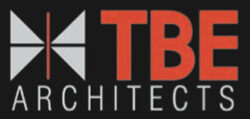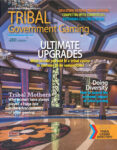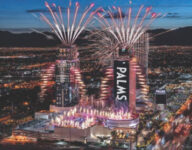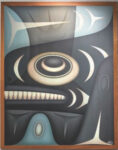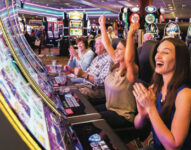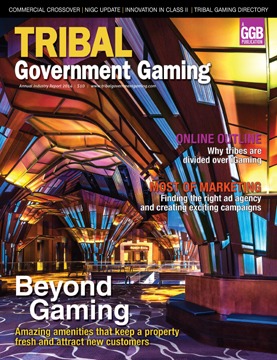
Is this a casino or Great Adventure?
Mohegan Sun’s planned resort in Revere, Massachusetts, approved by voters in February, will include a water park with a “lazy river” feature, plus indoor surfing, outdoor zip lines and horseback riding trails. It also will include two supervised kid-friendly attractions; a 5,000-square-foot greenhouse; a 10,000-square-foot spa; a boutique hotel with a conference rooms; and a retail, dining and entertainment component called the Shops at Mohegan Sun.
By the way, it will also have a few slot machines and table games.
The lineup of attractions at the $1.3 billion commercial casino resort, to be located at the Suffolk Downs race-track near Boston, reflects an accelerating trend among casinos—tribal and commercial alike—to build their
customer base by offering more non-gaming attractions.
With competition on the rise, operators are adding more nightclubs, day clubs, spas, pools, golf courses, cooking classes, video arcades, museums, playgrounds, even rock climbing and ecotourism activities. The goal: to bring in more people more of the time—and of course, get more of their leisure dollars.
The movement is not new; it started as competition increased in the gaming industry, and picked up steam during the recession, when gambling as a pastime took a nose-dive. Today, with the recession thankfully in the rear-view mirror and gaming on the rebound in many jurisdictions, long-deferred renovation projects are coming off the shelf.
What are tribal casinos doing to bring back old customers, add new ones, keep them on-site longer, and maximize every square foot of their properties?
Bigger Business
There are nearly 500 Indian gaming halls in the United States today. California alone has 68 tribal casinos and 90 poker rooms. Oklahoma has almost 100—in some cases three, four or more compete within a single community. Some tribal casinos are a literal stone’s throw from the competition. With more relaxed rules about off-reservation casinos under the Obama administration, the market could become even more crowded.
While the industry generates almost $30 billion a year in combined revenue, most tribal casinos are small to mid-sized, without the clout or big bucks of the Mohegans, the Mashantucket Pequots, the Cherokees or the Seminoles. For them, what additions make the most sense and offer the best ROI?
“We have a current Indian gaming client considering the inclusion of a very large specialty mixed-use retail center in their next phase of expansion: large specialty stores, a bowling alley and a cinema complex are part of the program,” says Dike Bacon, principal of the Memphis-based architecture firm Hnedak Bobo Group Inc. “Four or five years ago, this would have been unthinkable. The design emphasis continues to be focused on non-gaming revenue generation and atypical amenities.”
“More than just casinos now, these places are becoming hubs for entertainment,” says Dick Rizzo, vice chairman of California-based Tutor Perini Building Corp. “Only 20 percent of the people who go to casinos gamble, so entertainment is ever-increasing: food and beverage as well as pure entertainment venues, be it concerts, shows, nightclubs. These places have become sources of entertainment for the communities they service.
“It wasn’t like that when we started,” Rizzo adds. “Atlantic City is a classic example. Now it seems they make as much if not more money on non-gaming. They’re becoming much more of a resort.”
Beyond the Casino Floor
But entertainment and leisure activities are not one-size-fits-all propositions; what works on the Las Vegas Strip may be all wrong for a tribal casino in Wisconsin, Arizona, Michigan or Minnesota. Last November, when the Wyandotte Nation announced Phase One of a $30 million renovation and expansion of its casino in Thackerville, Oklahoma, it deliberately chose not to compete with Vegas-style competitors in the vicinity, like the River Spirit in Tulsa and the Downstream on the Oklahoma-Missouri-Kansas border.
Instead, it targeted locals who ideally will turn this casino into their daily or weekly watering hole. In addition to a new entertainment center, restaurant and deli, and two bars, the Wyandotte Casino is adding a four-lane bowling alley and a room for billiards and darts. When the upgrade is complete, it will turn the casino into “more of a social gathering spot,” says Wyandotte CEO Kelly Carpino, “a place where people come for a night of fun.”
It was the right choice for this casino in this locale, says Doug Worth, founder and chairman of WorthGroup Arch-itects of Denver, which designed the expansion.
“It comes down to knowing your customers, knowing their predominant interests and characteristics, and putting that into a plan that makes sense and is relevant to the current climate—the new now,” says Worth. “When tribal gaming first started, there might be absolutely nothing in a 200-mile radius. Casinos had the population base to support them, and tribes in that position for the most part have done very very well. The bigger challenge is when you’re second, third or fourth to the marketplace. Now you’re fighting for that customer share, and the choices become different.”
Testing, Testing
Worth recommends testing the waters, and making small changes to confirm the demands of the marketplace.
“Logically validate things before jumping too widely,” he advises. “I just saw a marketing piece for a conference that was still using the moniker, ‘If you build it, they will come.’ That’s a philosophy that’s going to get you in trouble. Do your research. That’s becoming the norm in Las Vegas as much as in the tribal community, because the financing for projects is not what it was five, six years ago.”
If a tribe verifies a need for meeting space in its area, for example, it could start with a temporary Sprung structure that requires minimal investment. “That enables you to test the return,” says Worth. “If it’s working, great. That justifies the next step, which is the permanent $50 million full-blown conference center. But don’t do it because your neighbor did it. All you’re doing then is increasing the saturation in the market.”
In the Midwest, where the winters are long and the climate often inhospitable, indoor attractions make more sense: a combination of retail and recreational amenities that will make people willing to scrape the ice off the windshields for a night on the town. For properties that draw a more rough-and-ready clientele, an RV park is likely a better choice than a high-end hotel. That same crowd may be more drawn to a sports bar with a dozen high-definition TVs than a fine seafood restaurant.
“Why do a 200-seat steakhouse in a more rural environment?” asks Worth. “It takes up a lot of square footage, is expensive to build, and more often than not is more an ego-driven decision than a practical one. Yet we see this. The best solution in those cases is a full-service restaurant that can be restructured and designed to provide a different type of menu service for dinner.”
For tribes, it may be especially important to safeguard investments with prudent choices, Worth adds. “It’s one thing for a corporation to go out and over-invest and lose shareholder money. You cannot do that in tribal community, or you affect generations of people who finally were given the opportunity to bring themselves up out of poverty.”
Brand Recognition
When the mammoth Harrah’s Cherokee in North Carolina completed a $650 million expansion in 2012, however, it was fully justified in adding a Ruth’s Chris Steakhouse and a Brio Tuscan restaurant to its extensive dining lineup. The casino’s patron base is so large and diverse, it pays for the Eastern Band of Cherokee to offer something for everyone, from a Dunkin’ Donuts to a Pizzeria Uno to an Asian fusion noodle bar and an all-purpose buffet.
Piggybacking on national brands like Ruth’s Chris is also a distinct trend for some properties, says Bacon; those household names bring instant recognition and invite very specific guest profiles. Working with the Pokagon Band of Potawatomi, Hnedak Bobo recently designed a new Hard Rock Café at the Four Winds Casino in New Buffalo, Michigan. This “high-profile and high-energy” addition was part of a larger expansion that included a 269-room hotel tower and 1,500-seat event center. The goal: “to leverage the music-oriented Hard Rock brand with the property’s new entertainment center,” says Bacon. Along with other non-gaming amenities at the property—including Kids Quest and Cyber Quest attractions for children and a shopping promenade—it has boosted the casino’s competitive positioning in the market.
Double Duty
To maximize the value of non-gaming space, tribal casinos are making it work overtime. One example: the meeting room at the WinStar World Casino in Thackerville, Oklahoma. By day, the place is all business, with a dais and stage, the latest technological gizmos, and variable seating that can be configured for conventions, civic organizations and other sober-sided conclaves.
After dark, this place turns into Oz. “The combination of ambient and spot lighting, furniture, finishes and Asian-inspired patterns transforms the space from a meeting venue into an atmospheric nightclub” called Mist, says Bacon, who worked with the Chickasaw Nation on the WinStar’s 2012 expansion. Party-going patrons slip past a velvet rope to enter the club, a playground of hypnotic lights and mind-bending house beats. It’s “the ultimate work-to-play flex space,” and a model of multi-purposing.
A neutral area like a meeting space can also be a great testing ground, says Worth. “It can be a buffet, it can be a lounge or a special events area; you can try lots of different things. We have a client that doesn’t have a buffet, so it’s using the meeting room. It’s driving traffic, the numbers are up, it’s validated the concept that there’s enough demand. So now they can say, ‘Let’s dedicate some space to a buffet.’”
Flexible, multi-functional spaces also can fill in gap periods, when visitation tends to be lower: days, midweeks, and the off-season. “Say your weekends are pretty good, but weekdays are awful,” says Tom Hoskens, principal, Cuningham Group Architects based in Minneapolis. “If you can create that meeting-room piece or section, you can start to draw people in Mondays through Thursdays.”
Budget-Minded
Sometimes, by refreshing existing amenities, casinos can create a sense of newness and novelty to relieve the dreaded “same old-same old” impression among customers. It’s also a good way to upgrade on a relative shoestring.
“Refreshing is the easy part—coming onto the gaming floor, brightening and freshening and adding color and adding lights and doing things that reconfigure the space,” says Hoskens. “Deeper, brighter colors have a tendency to add warmth. You can create movement and activate a space with lighting effects. Color, light and movement—these are the hallmarks you can use to do things less expensively, but still get the wow and the bang.”
Even minor changes should not be made capriciously, however. “You have to figure out how to attract people, give them something they haven’t seen before, give them something to talk about,” says Hoskens. “It has to create a reaction. If you make the investment but it makes no statement, it’s like throwing the money away.”
Where to start? “I like to say put your money where you make your money,” says Hoskens. “I would always start with the casino and refreshing that. From there, move on to the rooms. Because the longer people stay, the better the casino does.”
Trompe L’Oeil
A tried-and-true designer’s trick to economize is to use luxe finishes at eye level and faux finishes above. “Keep the quality surfaces close to the eye and decrease as you go vertically,” says Rizzo. “You can do lookalikes—faux woods and faux finishes—that look just as good from a distance.”
“If you can touch it and feel it, make it real,” agrees Hoskens. “Beyond that, you can faux it, and it will be just as impressive.”
Another way to trim costs is to go for smaller guest rooms, a strategy that makes sense for new construction. “The standard 425-square-foot room is standard now at 325 square feet,” Hoskens says. “You still want the guest to have a great experience, but you can make it just a little bit smaller. It can be very efficient and great-looking, and you can raise the quality of the material because you don’t have to cover as many square feet.”
Besides, he adds, “basically you want the person on the casino floor, not lounging every day in a super-spacious suite.”
Don’t skimp on your best customers, Hoskens adds. “Boutique hotels figured this out 20 years ago. If you take care of your VIP customers—give them a VIP room and some special attention, get to know them—that will bring them back again and again.”
One cost-savings opportunity is the result of an evolving design aesthetic, away from heavy theming, says Rizzo. “When tribes first got into gaming they were very sensitive to culture, and they tried to replicate that in their facilities. Mohegan Sun, when they first opened it, was all very tribal and native-themed. But as it grew up and competed with Foxwoods, it ended up going very contemporary. Heavy theming has given way to a much more chic, clean and modernistic kind of look.”
Such pared-down design “is fresh and new, and it doesn’t cost as much,” Rizzo says. “People are not looking for palaces and pyramids and Eiffel Towers anymore.”
Second Nature
One example of subtle yet spectacular theming can be found at Harrah’s Cherokee, which completed a $633 million renovation in 2012. The Eastern Band of Cherokee Indians wanted “a modern lodge look” for their Smoky Mountain resort, says Hoskens. That goal may be best represented by the property’s grand rotunda, which features soaring 75-foot trees illuminated by 30,000 LED lights, two 68-foot waterfalls that cascade from the ceiling to a collection pool on the lobby level, and a floating spiral staircase that ascends to the second floor.
The natural leitmotif is restated with four interior themes (Mountain/Breeze, Woodland/Moon, Rivers/Valleys, and Earth/Water) that create “a path of discovery,” says Hoskens, and organically guide patrons through the large space to restaurants, bars, showrooms and more. The exterior structure echoes “the layered and long, curving shapes of the Smoky Mountains,” according to Cuningham; the architects used indigenous spruce, oak and river cane in the building design, and plenty of glass and stone within.
The design won raves from the press and public alike; in online reviews, casino visitors mention the dazzling interiors more than any other element of the resort. In this case, design did what it’s supposed to do: it created a buzz, and told a story that is now being retold, enthusiastically, by guests.
Show Me the Money
If a tribal casino wants a foolproof upgrade, one that will bring in more customers, add gaming revenue, and effectively return its development costs, what should it add? If you answered a restaurant, spa, hotel rooms or entertainment venue, you’re wrong. According to WorthGroup Architects, casinos get the biggest bang for the buck by adding parking.
Not very sexy, is it? But according to the firm, a parking garage typically costs $10,000 to $15,000 per space, adds gaming revenues of $10 to $50 per space per day, and offers ROI of up to 75 percent. Compare that with a hotel. The price per room can easily exceed $100,000, sometimes twice that. The total expected return on investment is 30 percent to 40 percent. If you add retail or an outlet mall, you may be lucky to see ROI of 15 percent.
An RV park, on the other hand, almost pays for itself, costing from $15,000 to $35,000 per site, and adding average incremental gaming revenue of $50 to $150 per day for each one. That’s a return of up to 70 percent.
And that humble bowling alley? It does better than a swanky 18-hole golf course, costing about $100,000 per lane, luring up to 20 percent of adult bowlers to the casino, and returning up to 25 percent of its the initial investment. The links, on the other hand, will deliver between 5 percent and 15 percent. Not exactly a hole-in-one.
Despite the variations in ROI, all of these amenities add up to a total experience that brings a wider range of patrons, including those with no interest in pumping money into a slot machine. That said, the gambler is still king.
“When you talk ROI, there’s nothing that comes close to a casino—the casino floor is the engine that drives everything else,” says Worth. “Our customers may come to have a meal at a nice restaurant with a great reputation, but you’re talking about margins that are significantly less than gaming, and that won’t drive enough traffic to pay for the facilities we’re talking about.
“Even if your business is just weekends, even if you only get a full house during special events and holidays, you still need that full house,” he says. “The casino will pay for itself”—and everything else too.



